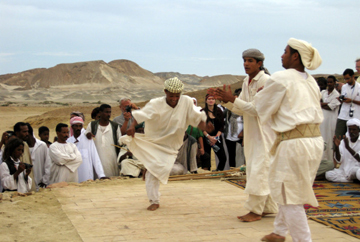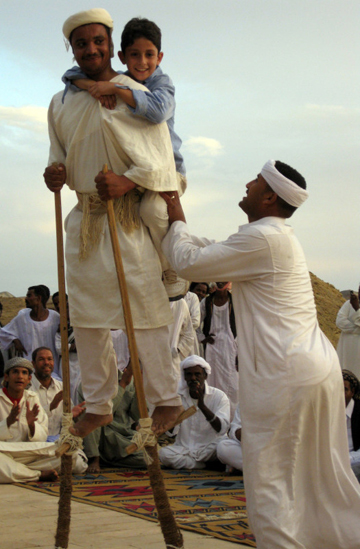
The ancient tribal endurance competition “tug of war.” This and all photos: Nick Rowlands
The idea was that tourists and tribes would all interact with and learn from one another. Events were planned so visitors could find out about tribal law and customs, desert survival skills, and native plant medicines. There was to be singing and dancing, competitions and traditional games – a veritable orgy of enlightened cultural exchange.





